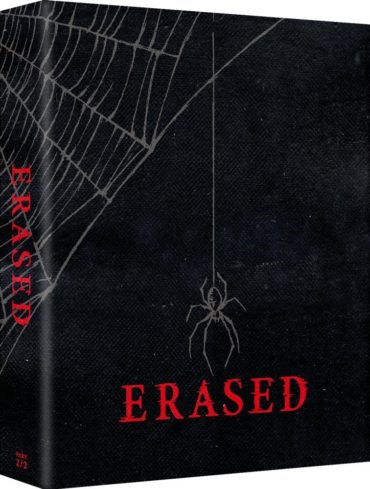ERASED – Part 2 Review
ERASED, known as The Town Without Me in its native Japan, started off life as a manga series written and illustrated by Kei Sanbe, but since then it has had spin-off manga and light novels, a live action movie, a live action TV series (that debuted on Netflix in the months in between my reviewing these two parts!) and, of course, the anime series we’re talking about now. This set contains the last six episodes of the 12 episode series, which, yes, is a rather old-fashioned release model, and a rather expensive one, sadly.
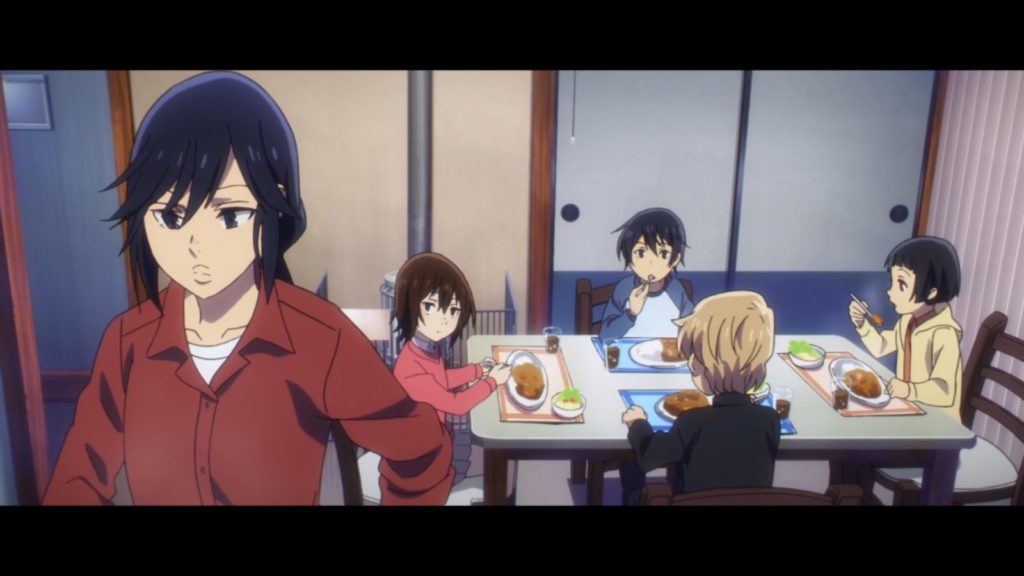
Picking up from Episode 6, and sorry if you haven’t watched Part 1 (but this is the Part 2 review, after all…), the series’ protagonist Satoru Fujinuma is about to be arrested as his attempts to stop a serial killer who was responsible for killing his mum have failed. He tried to do this by using the ability he calls “Revival”, which can send him back in time in order to help people, normally by only a few seconds, but when his mother died shortly after talking about a string of missing girls from when he was a child, Satoru “revived” back into his childhood body. He tried to save the abused child Kayo from both the girl’s own mum and the eventual kidnapper, and hoped that by doing that he’d save his mum in the future, but it all went a bit… wrong, to say the least. In the opening moments of Episode 7 Satoru manages to re-“revive” back into his childhood body and start again, realising that this is probably his last shot at finding the person responsible and saving everyone…
I think the key to ERASED’s success is how well realised and written the characters are. You do get a genuine feeling of warmth from Satoru and his mum, you do feel genuinely sorry for Kayo and want her to find happiness, and in general there are many scenes with Satoru and his friends that portray a very real feeling of friendship. Say what you want about the series, and it does have its diehard fans and its venomous haters, you can’t deny its characters are very human, and very likable (well, apart from the killer, obviously…) Actually, on the subject of the killer, one criticism I have is that his/her identity is telegraphed rather strongly before his/her “shocking reveal”, a rare flaw in otherwise very strong writing.
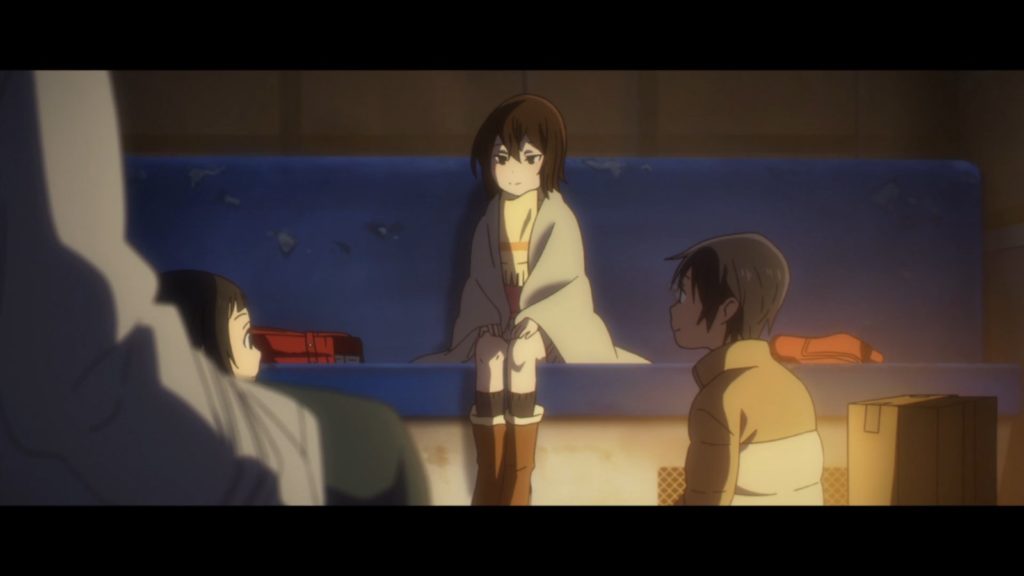
One of the main talking points about this series you’ll see online is the ending, and how it gets a lot of stick from a good number of people. Without saying anything specific, I think it seems to stem from it being so different from the original manga’s ending, and how it wraps everything up rather quickly compared to the original’s more drawn-out psychological game between Satoru and the killer. It’s a valid complaint, but I honestly didn’t find the anime’s ending bad, just lacking compared to the original (which I looked into after watching the series, for the purpose of this review!). It’s still an ending that satisfies the viewer for his time spent watching the previous 11 episodes, even if it does sadly err on the side of convenience and speed, rather than suspense and pace. It’s the difference between a written series being given all the time it needs, and an anime adaptation that’s given a flat set of 12 24-ish minute episodes. To spend several episodes on the longer original ending, they would have had to cut something else from the beginning or middle, which would have been an equal, if not bigger shame.
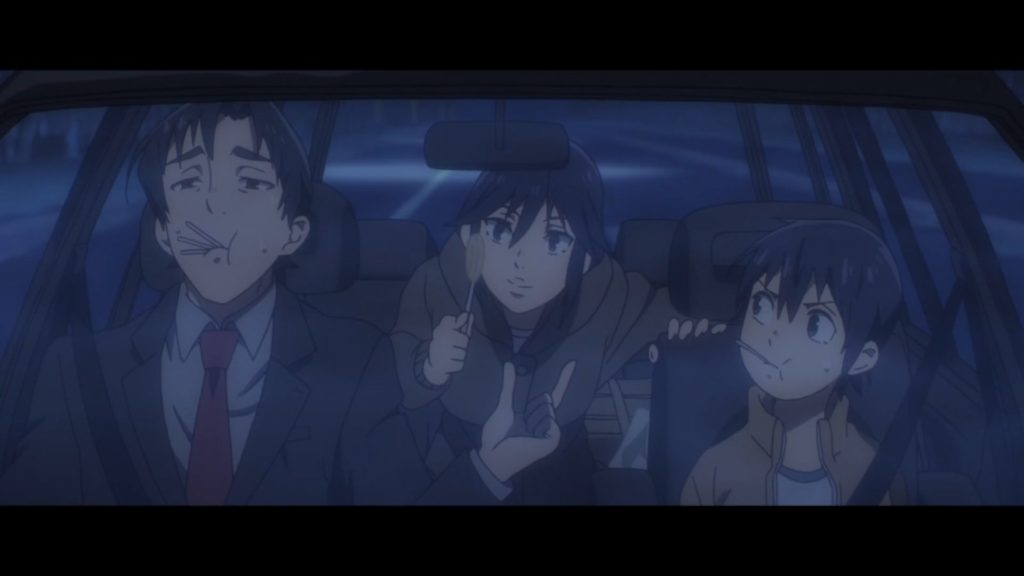
The opening and ending themes remain “Re:Re” by Asian Kung-Fu Generation, and “It’s like a Small Light” by Sayuri, respectively. The on-disc extras are audio commentaries for Episodes 7,8,11 & 12, Textless Opening & Closing and some trailers. Like Part 1, this release comes in a “rigid case” with the discs in a digipack and a 40-page book containing character files, key animation, an interview with Tomohiko Ito (the director of the series), and other goodies.
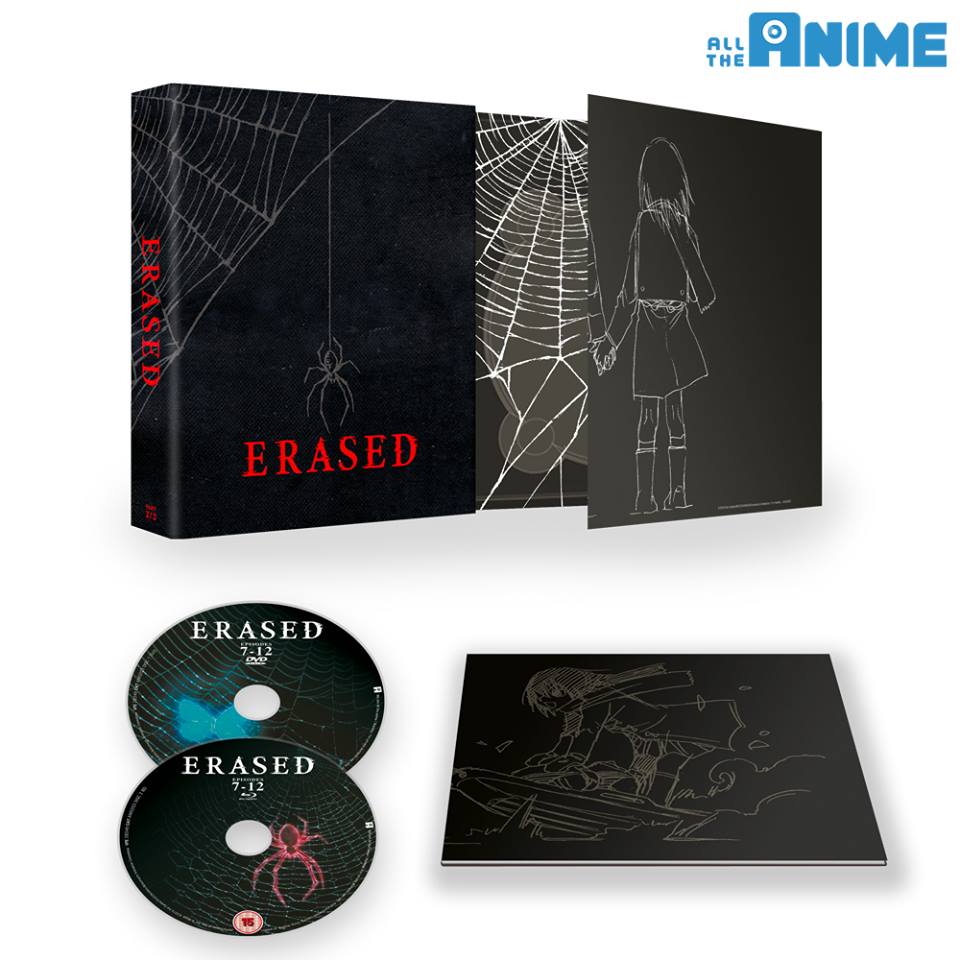
So do ERASED’s final six episodes live up to the first six? Probably not, but nearly. It’s still packed with great characters, drama, a few twists (though the major one falls flat) and generally a pleasure to watch, with both the animation quality and the voice work in both languages doing justice to the story. The ending feels rushed, even more so if you look into the original ending, but it’s a good enough ending, given the time constraints. If this was released as a traditional 12-episode “complete series” I’d rate it with the same ‘9’ I gave Part 1, but on its own I have to mark Part 2 down one, as it falters on a few points. It’s still a highly recommended series, overall.


